Can You Put Lichen in a Terrarium? A Comprehensive Guide
Lichens are fascinating composite organisms that form symbiotic relationships between algae and fungi. With their intricate shapes and stunning colors they can make a beautiful addition to open indoor terrariums. But can you successfully grow lichens in these miniature enclosed worlds? The answer is yes – with the right conditions lichens can thrive inside terrariums.
In this comprehensive guide, we’ll cover everything you need to know about adding lichens to terrariums, from selecting compatible species to proper care and display tips. Read on to learn how to incorporate these natural artworks into your own unique living terrarium designs.
What Are Lichens?
Before jumping into lichen terrariums, it helps to understand what exactly lichens are. Lichens arise from a mutualistic symbiosis between a fungus and an algae or cyanobacteria. The main body or thallus of a lichen consists of fungal filaments or hyphae. The algae or cyanobacteria live among the hyphae and provide food through photosynthesis.
Lichens grow on various surfaces like rocks, soil, bark, and more. They come in several different forms including:
-
Crustose – Form a crusty covering on surfaces.
-
Foliose – Leafy and lobed lichens.
-
Fruticose – Shrubby or branching lichens.
Though they may resemble mosses or small plants, lichens are uniquely classified as fungus-algae composite organisms.
Benefits of Adding Lichens to Terrariums
There are many good reasons to consider incorporating lichens into terrarium designs:
-
Visual Interest – Lichens provide diverse colors, textures, and forms.
-
Complement Plants – Lichens naturally grow among mosses and foliage.
-
Add Height – Fruticose lichens can create vertical accents.
-
Accent Hardscape – Lichen-covered rocks or wood stand out.
-
Aged Look – Lichens give a sense of maturity to displays.
-
Natural Appeal – Lichens evoke outdoor environments like forests.
With proper selection and care, lichens can beautify open terrariums as they lend their unique magic.
Best Lichen Species for Terrariums
Choosing hardy lichen species suited to the warm, humid, low-light conditions inside terrariums is key. Some top options include:
-
Cladonia (Cup Lichens) – Goblet-shaped lichens in green, gray, red. Slow growing.
-
Parmotrema – Rounded foliose lichens with powdery gray-green surfaces.
-
Usnea (Old Man’s Beard) – Shaggy, hanging fruticose strands up to 6+ inches long.
-
Xanthoparmelia – Tiny yellow-green crustose lichens that form mats on rocks.
-
Peltigera – Low, furrowed blue-gray dog lichens that like moisture.
Research species’ specific light and humidity needs before selecting lichens for your terrarium.
Caring for Lichens in Terrariums
To keep lichens healthy in enclosed terrariums, focus on providing the following care:
-
Moderate to Low Light – Avoid direct sun which can dry lichens out.
-
Good Airflow – Position lichens near ventilation to prevent mold.
-
Shallow, Wide Containers – Allow air circulation to lichens’ shallow roots.
-
Sparse Watering – Mist occasionally, avoid oversaturation.
-
Trim Overgrowth – Replant trimmed strands to propagate.
-
Monitor for Pests – Watch for mites, isolate and treat affected lichens.
-
Remove Dead Material – Prevent rot from spreading.
With the right maintenance, lichens can thrive for years inside terrarium environments.
Complementary Terrarium Elements
Lichens naturally complement these terrarium materials:
-
Mosses – Grow together in nature, share moisture needs.
-
Small Ferns or Foliage – Lichens grow on plants as epiphytes.
-
Succulents – Contrasting rosette shapes and textures.
-
Rocks, Concrete, Gravel – Mimic natural rocky substrates.
-
Wood, Cork, Rotting Wood – Recreate a lichen-dotted forest floor.
-
Figurines, Miniatures – Enhance the mini-world effect.
Blending lichens with other compatible elements creates a well-balanced terrarium habitat.
Bringing Nature Indoors with Lichen Terrariums
With proper selection of hardy species adapted to the warm, humid terrarium environment, lichens can be successfully cultivated in open indoor gardens. Their incredible diversity and natural beauty make them a wonderful addition to living terrariums. Carefully tend to lichens’ moisture, light, and ventilation needs to keep them healthy. Pair lichens with mosses, plants, rocks, wood, and decor to design your own wondrous lichen terrarium. Let these composite organisms work their magic to bring a piece of nature’s art into your home.
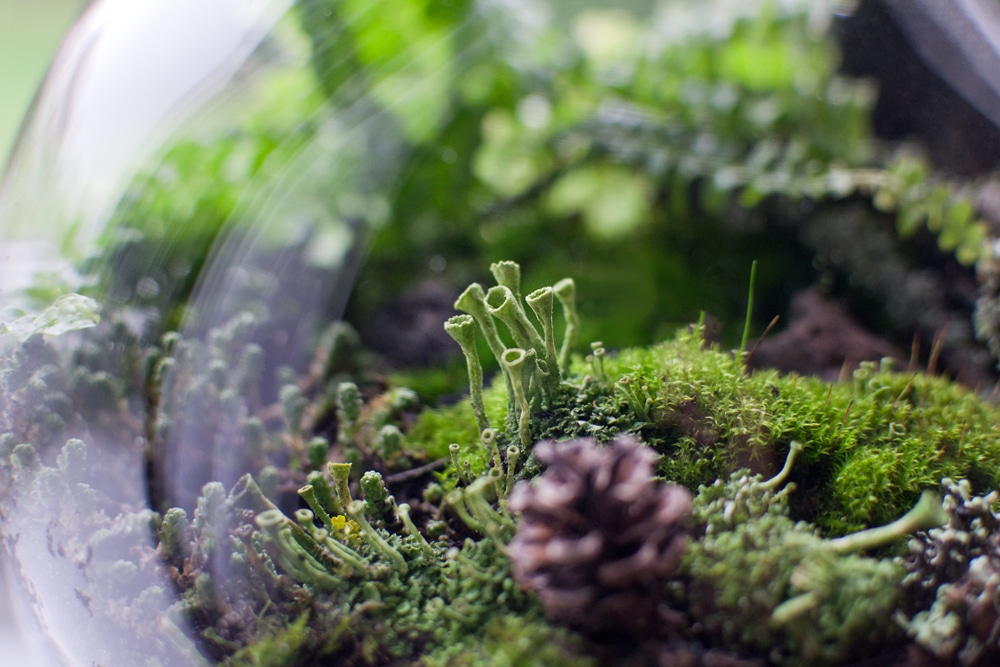
DIY MOSS AND LICHEN TERRARIUM
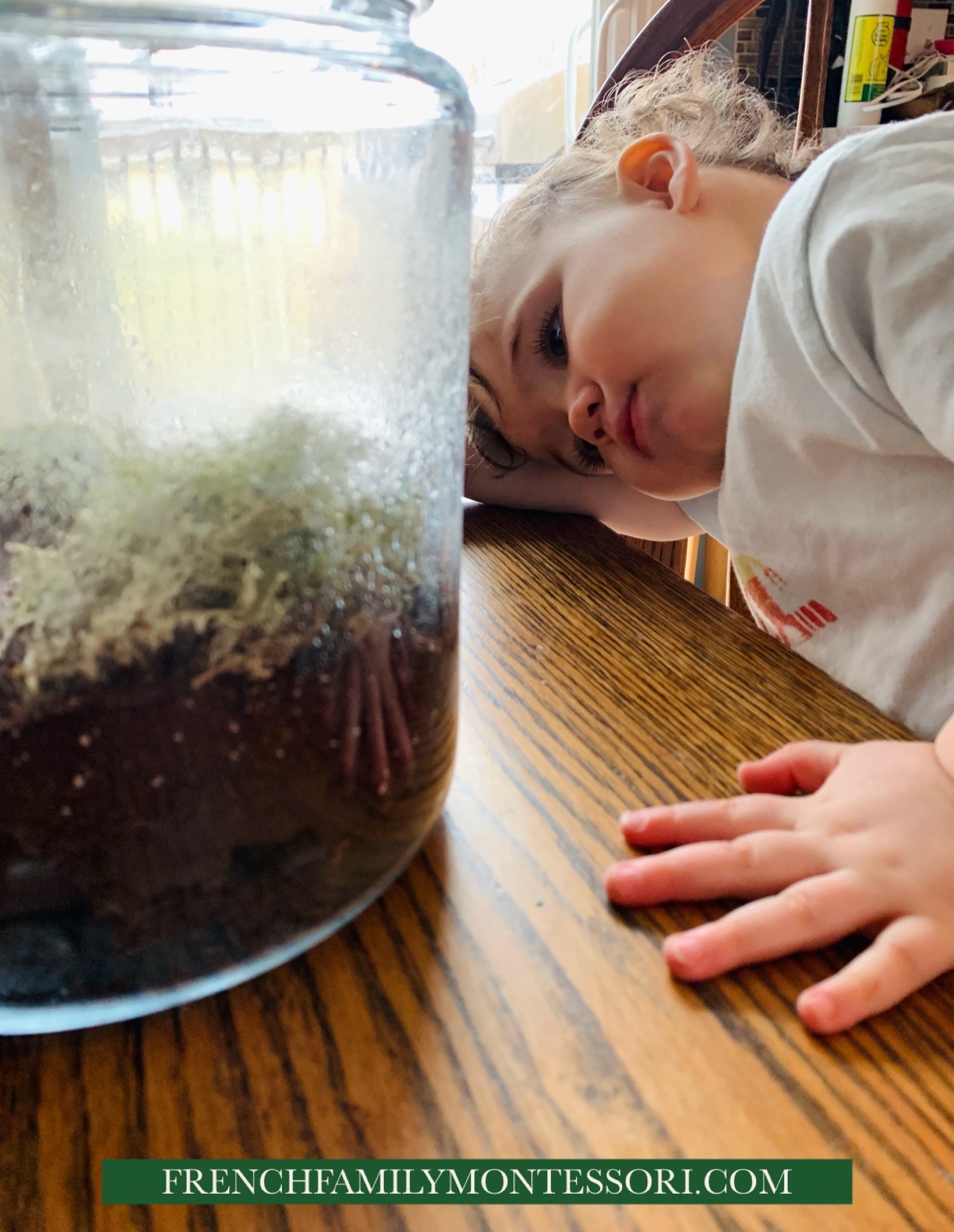
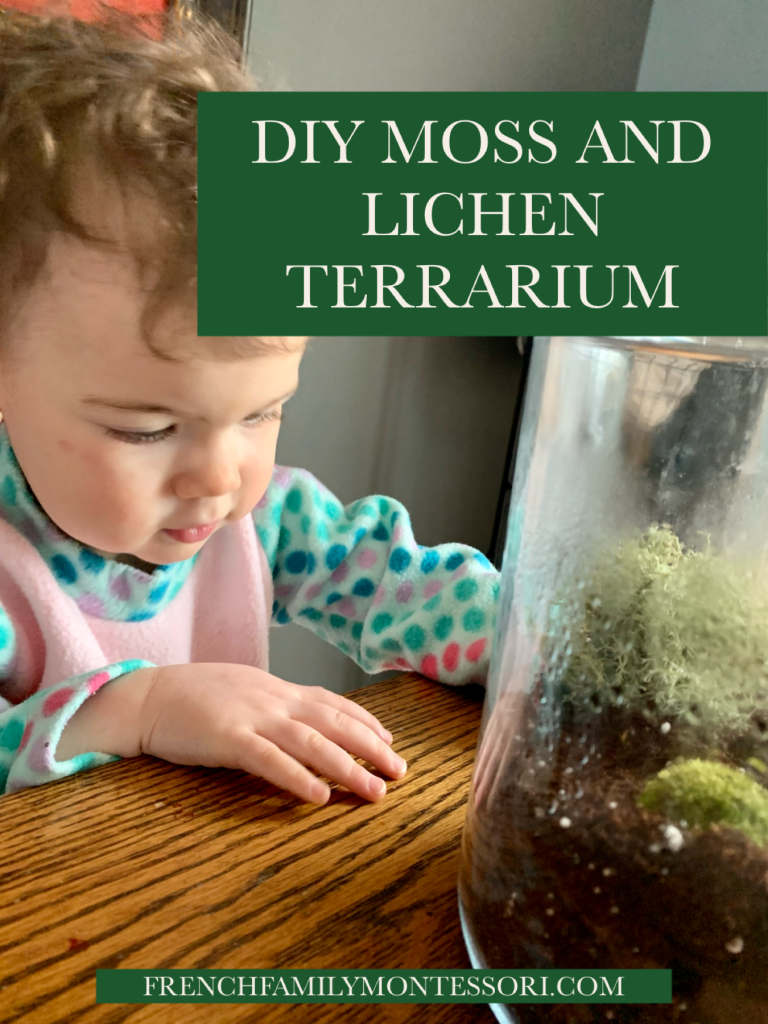
It’s officially spring and we’ve had some lovely weather lately that makes us truly believe we are through winter. I’ve been seeing many families beginning their seeds for gardens and I can’t wait to start ours…but not yet. The last three years I’ve started our seeds, joyfully, with everyone else and it has only lead to being bummed and replanting. They get leggy or the cat believes they were planted for her pleasure only (they weren’t, haha).
E and V have been into scooping lately (I know, I know–most of the posts begin this way, but observing and following the child is a BIG part of Montessori). On our last hiking adventure, E managed to collect a few little moss balls. Since we can’t start our seeds, I thought they would enjoy creating a moss terrarium that would involve another favourite of E’s: rocks!
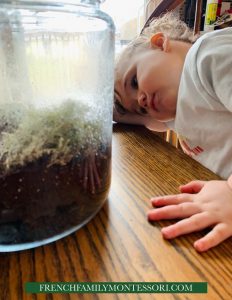
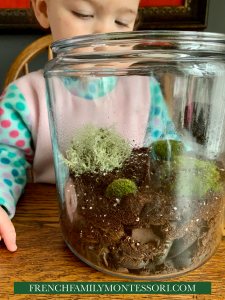
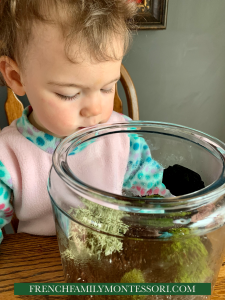
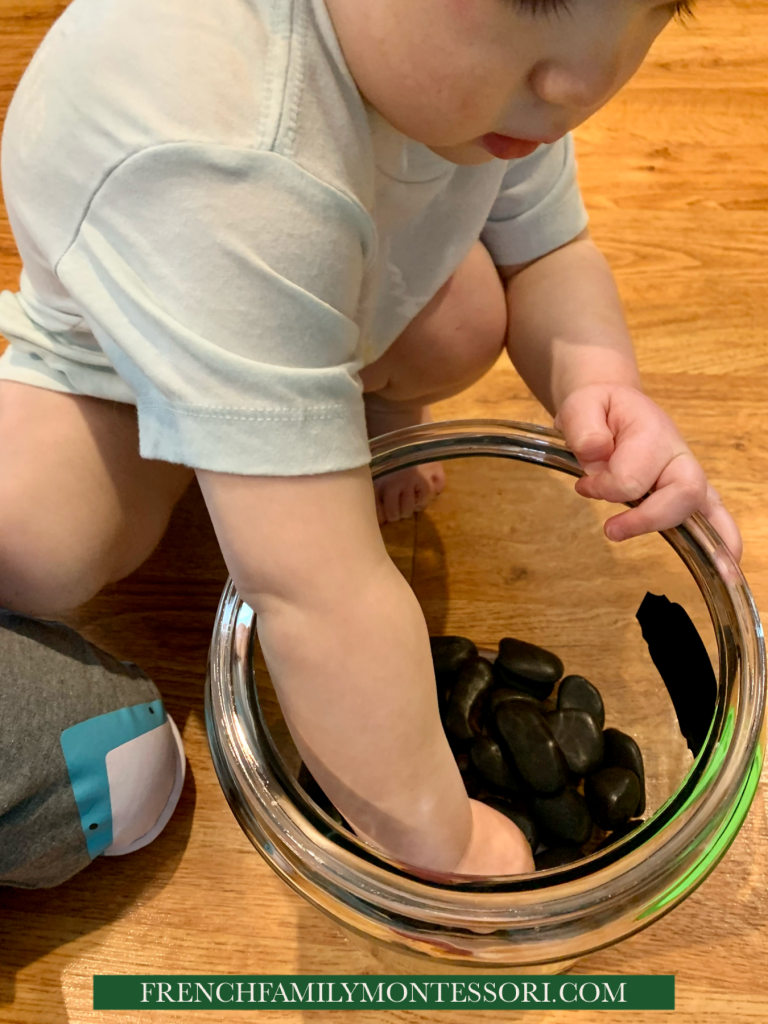
We have a lot of jars. I try to limit our waste, so grocery stores with bulk bins that allow us to bring in our own containers and fill with goods, especially glass jars, is pretty great. But with the pandemic, many of these stores aren’t allowing for bring-you-own-jars, which leave us with plenty of unused ones. We were able to find one, among our collection, that would be perfect. If we had just one or two moss balls, a wide-mouth Mason jar would’ve worked perfectly, like these. But with a few different moss balls and a lichen, we decided it was best to go with something wider, like this.
So how to create your moss terrarium–
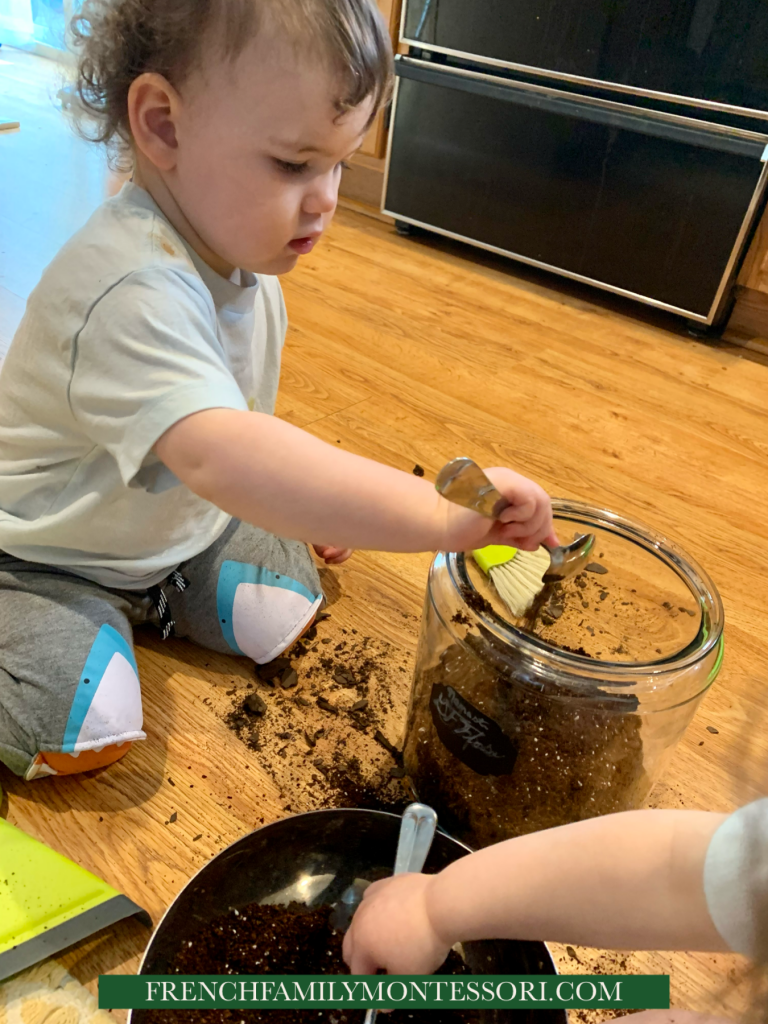
Layers:
-First, rocks. Smaller pebbles, like these, would be ideal–but we used the rocks we had leftover from our wedding reception almost 3.5 years ago.
-Next, orchid potting mix. This blend is perfect for preventing the top layer (soil) from settling into the rocks.
-Top Layer, potting soil. Just a thin layer. Moss grows everywhere, unlike most other plants, moss are non-vascular (and yes, you know there’s a homeschool lesson coming up:), so they don’t need deep soil (if any).
- Add moss and water. Just lay your little clump on top and they’re good to go. (We have a lichen, likely temporary, which is so cool as it looks like coral. Lichens need to dry out while moss enjoys humidity, so we’ll probably observe and study, then take the lichen back outdoors. Also, certain types of lichen can be harmful.)
Have you ever created a moss terrarium?
This post contains affiliate links at no extra cost to you.
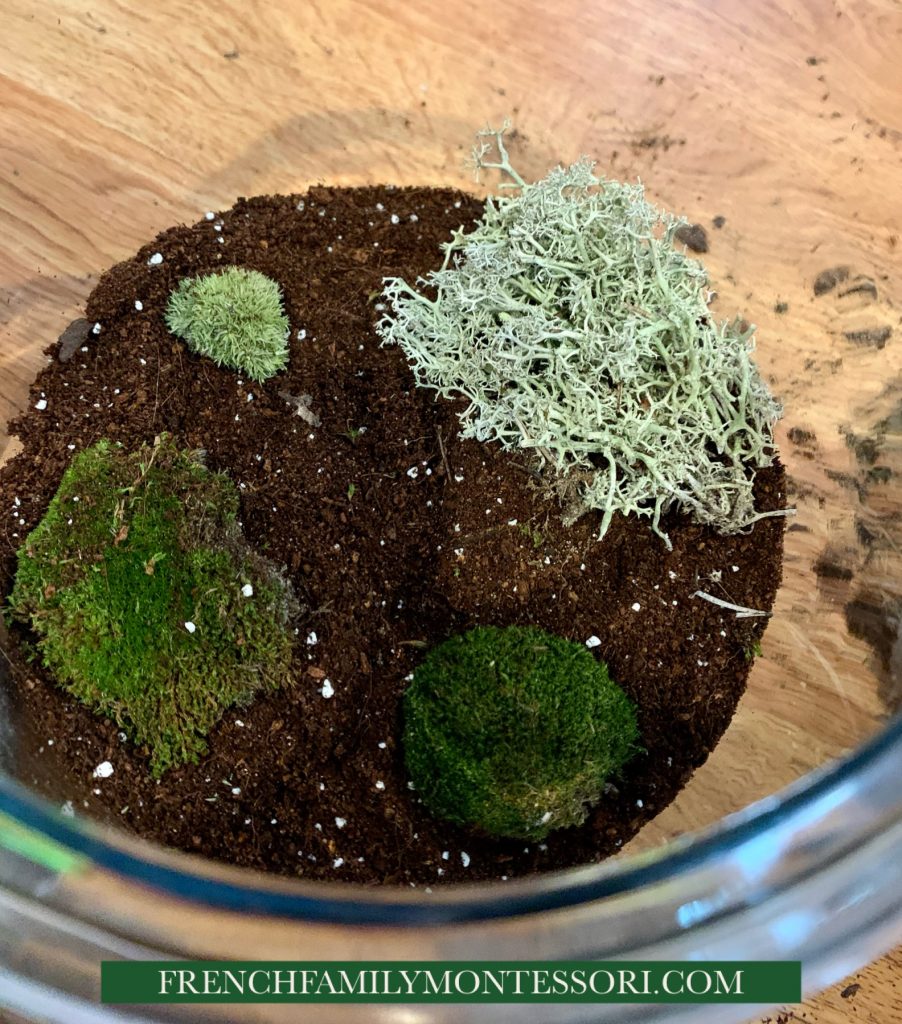
Easy Terrarium Build
FAQ
Can I put lichen in my terrarium?
Cup lichens are wonderful in open terrariums and fairy gardens. We also love to use them as top dressings around temperate bonsai trees. C.Sep 27, 2021
Can you keep lichen alive?
Yes, lichens can be kept alive with proper care. They primarily need water, air, and light. Mist them periodically to keep them moist, and place them in a spot with indirect light.
Is lichen harmful to plants?
They are not parasitic or harmful to the plant. Lichen is not attributed to being the cause of poor health in any plant. Typically, less vigorous plants and plants with declining growth due to lack of light, poor conditions, and health are susceptible to lichen growth.
